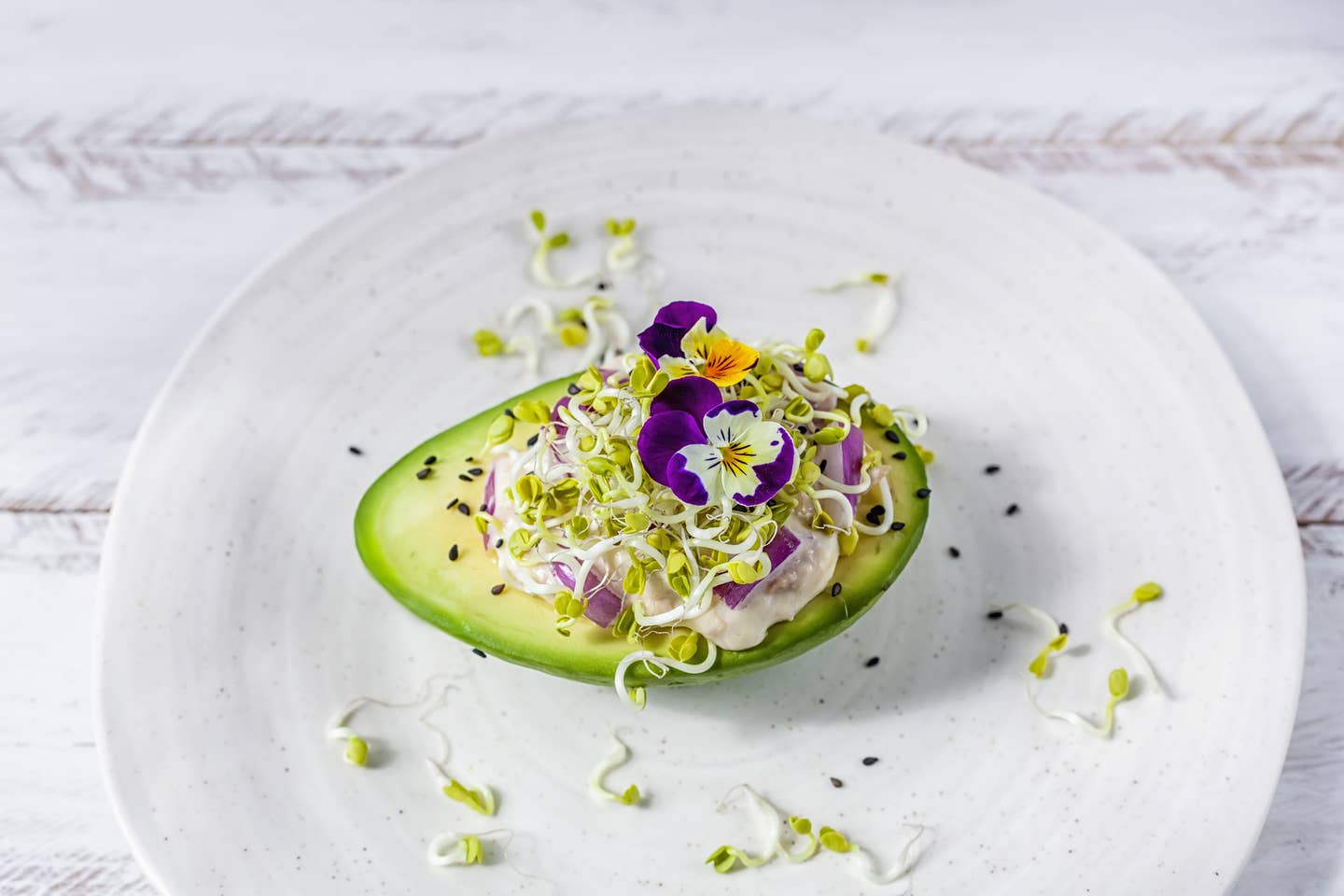
How (and Why!) to Sprout Your Way to Better Health While Working From Home
Quarantine got you feeling overwhelmed? You’re certainly not alone (although hopefully at least six feet away from anyone else). These are unprecedented times. But when we’re stressed and forced to sit on our couch all day, the tendency to comfort eat can hit us hard. It certainly doesn’t help that going out for groceries is nothing short of life-threatening. But you don’t need to have a thriving greenhouse or garden to keep with those health goals. In fact, all you may need is a sprouting kit.
Do fluffy alfalfa sprouts remind you of health food stores and hippie food? They earned their hippie status during the 1960s and ‘70s when people were “dropping out” of mainstream culture. They were pivoting away from conventional diets and embraced the easy nutrition benefits in sprouting.
But don’t let bellbottom stigmas steer you away from these superfoods. Sprouts are cheap and easy to grow in your own kitchen. And a little sprouting a few minutes a day may just get you away from staring at your phone all day.
Here’s everything you need to know about sprouting.
Types of Sprouts
Beans, peas, lentils, vegetables—pretty much anything that grows can be sprouted. If you’re only familiar with fluffy alfalfa sprouts, you’re in for a treat. Try sprouted broccoli or radish (both similar to alfalfa). These make great salad and sandwich toppers and are an easy, delicious snack all on their own.
But sprouting doesn’t stop there. Did you know you can sprout lentils, peas, and beans, too? These protein-dense sprouts are hardier than the fluffy seed sprouts and they can liven up sandwiches, soups, and salads.
And then, of course, there are chia sprouts. Made from the multipurpose chia seed, chia sprouts had their claim to fame with the chia pet (if you grew up in the ‘80s and ‘90s you surely saw the ch-ch-ch-chia pet commercials and maybe even had one of your own). But these aren’t just gimmicky garden toys for kids. Sprouting chia seeds is for all ages.
Why Sprout?
Is there really a benefit to sprouting? The short answer is yes, there are many benefits. For one, it’s a contained environment, which means you’re reducing your risk of any harmful contaminants (coronavirus or otherwise).
Sprouting is easy—you can “grow” perfectly healthy, delicious, edible greens in your own kitchen in a few short days. All it takes is a rinse and a shake a few times a day and it’s done.
And when you have healthy food accessible, you’re more likely to eat it. A jar full of fresh mung bean or broccoli sprouts staring you in the face makes it easier to resist grabbing for the Oreos (almost).
There’s also something to be said for the DIY benefit of growing your own sprouts. It doesn’t take much effort, but the reward is having something you’re quite proud of having done on your own. And if you have kids in your house, they love watching seeds or pulses turn into yummy, edible rewards.
Sprout Nutrition
According to Healthine, while sprouts vary, most of them are richer in protein, folate, magnesium, phosphorus, manganese and vitamins C and K than un-sprouted foods.
“Several studies show that sprouting helps increase protein content,” Healthline notes. “Sprouts also tend to contain higher levels of essential amino acids, with certain individual amino acids increasing by as much as 30%.”
There are some experts that also suggest sprouted foods (especially grains) can be easier on the digestive system than unsprouted. This may be due to the reduction of antinutrients as a result of sprouting. So you’re getting more of the nutrients in sprouted foods than in those that are un-sprouted. And just like all plant-based food, they’re rich in antioxidants that can help boost immunity and reduce the risk of certain types of disease.
How to Sprout
There are a number of sprouting devices out there but all you really need is a clear mason jar and a mesh lid.
- Have a clean wide-mouthed jar ready.
- Rinse your seeds in cool water and drain. Remove any debris such as rocks or pebbles.
- Soak your seeds in the jar about ¾ of the way full for at least 8 hours. Large beans like kidney beans or chickpeas may need to soak 24 hours.
- Cover the jar with mesh lid or cheesecloth.
- Drain your seeds.
- Rinse and Repeat. For the next 3-5 days, you’ll gently rinse your seeds about 3 times per day and drain well. Once your sprouts are ready, rinse again and remove un-sprouted seeds and seed hulls. Sprouts will last in the fridge for about 7 days.
- Eat and repeat!
More From The Beet






